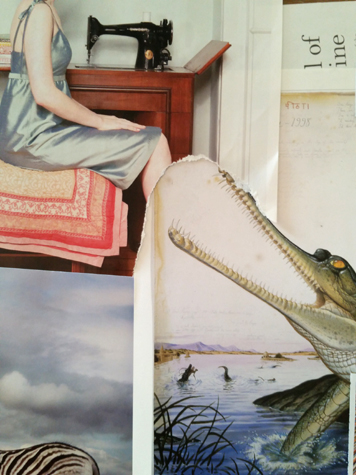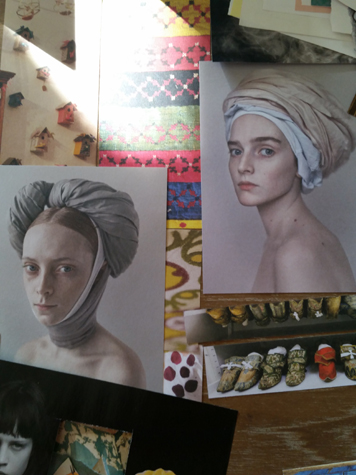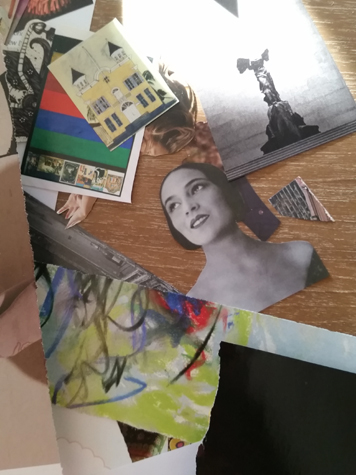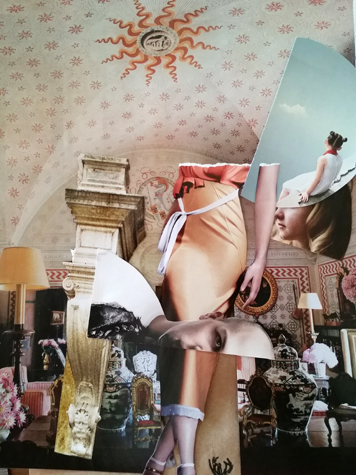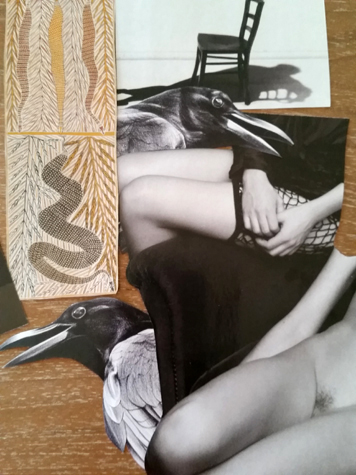 Recently I visited the La Fab Boutique where my fine art cards are sold. A 10-minute drive from downtown Ottawa in scenic Chelsea, Quebec, it’s a jewel of a spot nestled within the majestic Gatineau Hills. The area is known for its cozy cafés, art galleries, craft stores and bakeries. It’s also the home of the ever-popular Nordik Spa. I love the gallery’s garden which incorporates art and found objects into its landscaping. Recently I visited the La Fab Boutique where my fine art cards are sold. A 10-minute drive from downtown Ottawa in scenic Chelsea, Quebec, it’s a jewel of a spot nestled within the majestic Gatineau Hills. The area is known for its cozy cafés, art galleries, craft stores and bakeries. It’s also the home of the ever-popular Nordik Spa. I love the gallery’s garden which incorporates art and found objects into its landscaping.
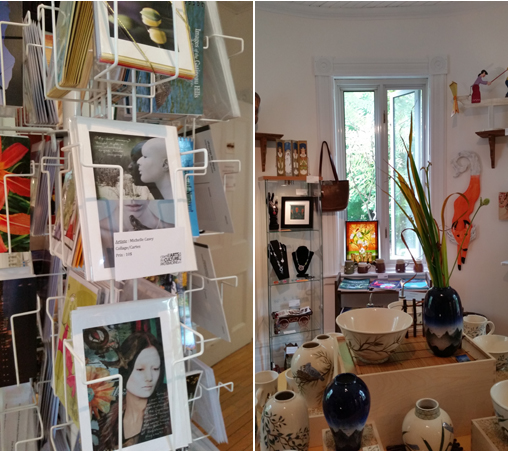 I was pleased to discover that my cards are selling well in the boutique and hope to have some new designs to submit to the store in the near future*. The store sells the work of many local artists from Ontario and Quebec. I always have a hard time visiting it without buying something… for me, purchasing a small piece from an artist whose work I love is always a must. I was pleased to discover that my cards are selling well in the boutique and hope to have some new designs to submit to the store in the near future*. The store sells the work of many local artists from Ontario and Quebec. I always have a hard time visiting it without buying something… for me, purchasing a small piece from an artist whose work I love is always a must.
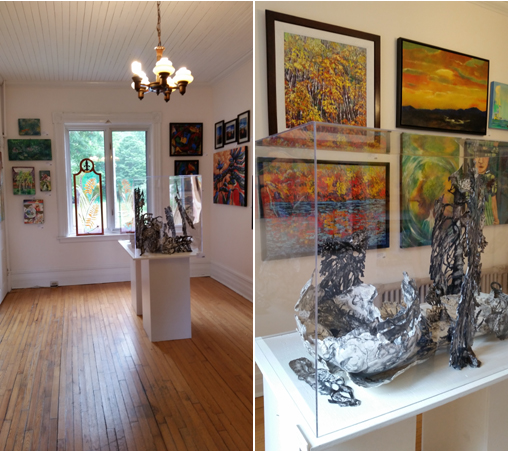 A former church rectory, which has been lovingly restored, La Fab’s Gallery showcases the work of established and emerging artists. The photo (above, right) features the ceramic collage sculpture of Lisa Creskey (see glass case). For my review of her work see: Lisa Creskey: Telling Stories with Clay. A former church rectory, which has been lovingly restored, La Fab’s Gallery showcases the work of established and emerging artists. The photo (above, right) features the ceramic collage sculpture of Lisa Creskey (see glass case). For my review of her work see: Lisa Creskey: Telling Stories with Clay.
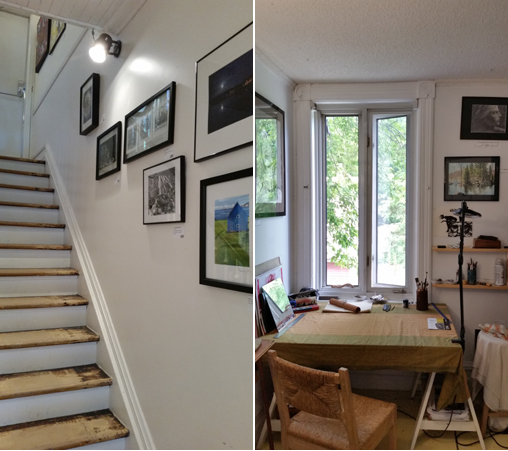 Upstairs, the gallery rents studios to several artists (i.e painters, print makers, mixed media artists, etc.). I love seeing artists’ work in progress. I especially get a thrill out of walking through their studios because it’s a lot like travelling through their minds! Upstairs, the gallery rents studios to several artists (i.e painters, print makers, mixed media artists, etc.). I love seeing artists’ work in progress. I especially get a thrill out of walking through their studios because it’s a lot like travelling through their minds!
I hope you enjoyed this brief tour of La Fab (also known as the Chelsea Arts, Culture and Heritage Centre). If you’re ever planning a weekend outing here, La Fab’s exceptionally friendly staff will make you feel at home. The Centre also hosts outdoor fundraisers, musical shows and art workshops for adults and children.
* Note: Collage Your World cards sell for $10 each; printed on high quality fine art paper, they’re perfect for framing. Cards sold at La Fab include: “Princess in the Making”, “First Memory”, “Fukushima, Hiroshima, Nagasaki”, “The Sound of Silence”, “Becoming”, and “The Edge of Nowhere”. Don’t hesitate to let me know if there are any other collage prints of mine you’d like to see in card format.
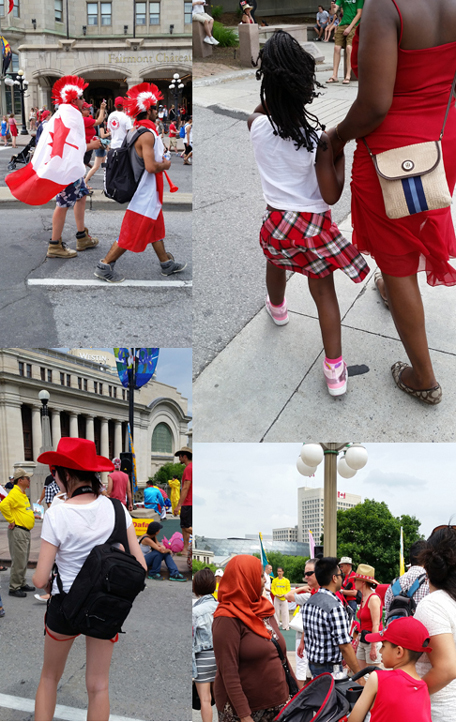 Ottawa, Ontario, Canada Day 2014 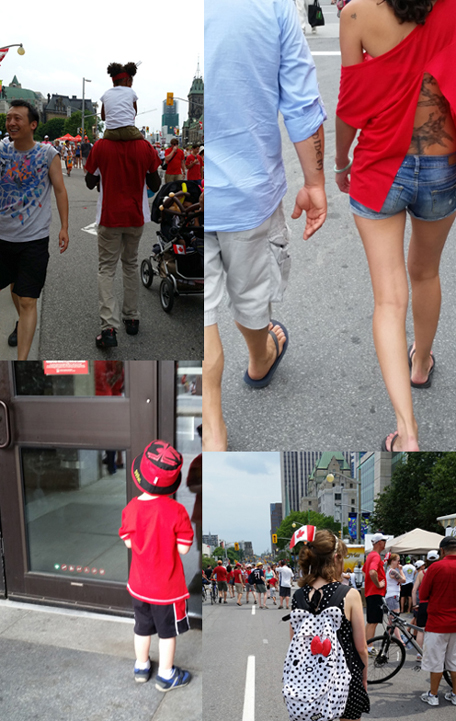 Ottawa, Ontario, Canada Day 2014 Happy belated Canada and Independence Day to my Canadian and American friends! Canada’s been my home for the past 40 years; it’s hard to believe the time’s gone by so quickly. On our first Canada Day here, I remember my parents being so excited that they secured a spot early in the afternoon on the lawn of the Parliament Buildings to see the fireworks– one of the best views in town. Unfortunately, the moment they began, my sister Anna, just 3 then, began crying her head off! She was terrified by them so we had to move a couple of blocks away to calm her down. A most memorable Canada Day was in 1977 when my parents brought my brother home from the hospital; he was born a few days before the holiday weekend. For my sisters and me, it was a thrill not only to see the fireworks but also to welcome a new member into our family.
This year, wanting to commemorate the day through images, I decided, for the first time ever, to capture the festivities on camera*. Unfortunately, as luck would have it, I didn’t take any of the fireworks because I was too busy fending off mosquitoes with both hands! And wouldn’t you know, as though it was some unofficial yearly ritual, it started raining a few minutes before the fireworks began (don’t you just hate it when that happens). Anyway, the holiday was a great excuse to continue to experiment with my Samsung S5 cell camera as well as practice my electronic collaging. I’m a great people-watcher, so I was in my element snapping up photos of interesting people in the crowds as discretely as possible. Later, as I reflected on my stash of photos, I realized how much things had changed over the decades. The event has gotten bigger and better over the years; the crowds are larger and it’s now timed perfectly with our city’s Jazz festival. We have such an eclectic group of citizens here, it’s wonderful to see everyone come together to celebrate the day wearing splashes of red and waving mini flags to mark their pride of being Canadian. It’s a day when I’m reminded how grateful I am to live in a country where we can more or less follow our dreams and shape our own unique identities. If you’d like to share your favourite national holiday photos or stories with me, I’d love to hear them. Below are a few fabulous links of some our Canada Day events.
*Note: It’s funny how sometimes when you live in a place you can take these yearly rituals for granted. I’ve been in Canada for over 40 years and never taken a single photo of Canada Day.
PS I’ll be taking a break to work on a project for the next week or so. Will be back blogging on the week of July 28, 2014. Hope your all enjoying the summer!
Other Related Links:
Ottawa Jazz Festival Website
Canada Day Fireworks 2014, Kelowna, BC (YouTube)
CBC Canada Day 2014: July 1 celebrated across the country
 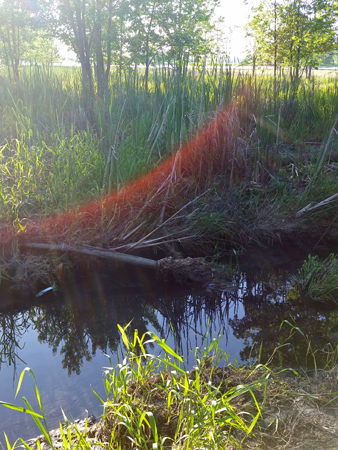 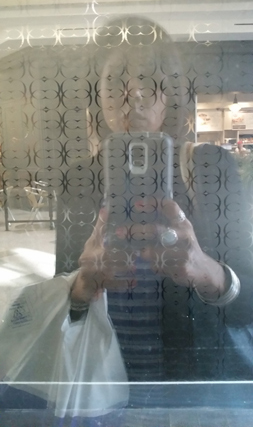 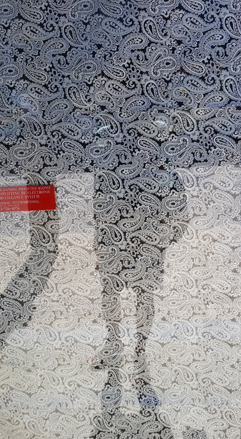 When it comes to collaging there are many ways to layer your images. In the real world we can use mediums (paints, inks, etc.) and materials (ie. papers, tissue, transparencies, etc.) to achieve layered effects. In the virtual world, software such as Photoshop allows us to do the same using a concept called “layers” with which we can make images transparent and layer them upon each other to achieve stunning, seamless visuals. Layering images makes them appear surreal; implying that many worlds can exist within a single work. This in turn leads the viewer’s imagination on an intriguing visual journey as well as offering further insight into the theme of a collage. Although you may not have considered it a collaging tool/medium, your camera (or cell phone camera) can help you easily achieve magical layered effects. When it comes to collaging there are many ways to layer your images. In the real world we can use mediums (paints, inks, etc.) and materials (ie. papers, tissue, transparencies, etc.) to achieve layered effects. In the virtual world, software such as Photoshop allows us to do the same using a concept called “layers” with which we can make images transparent and layer them upon each other to achieve stunning, seamless visuals. Layering images makes them appear surreal; implying that many worlds can exist within a single work. This in turn leads the viewer’s imagination on an intriguing visual journey as well as offering further insight into the theme of a collage. Although you may not have considered it a collaging tool/medium, your camera (or cell phone camera) can help you easily achieve magical layered effects.
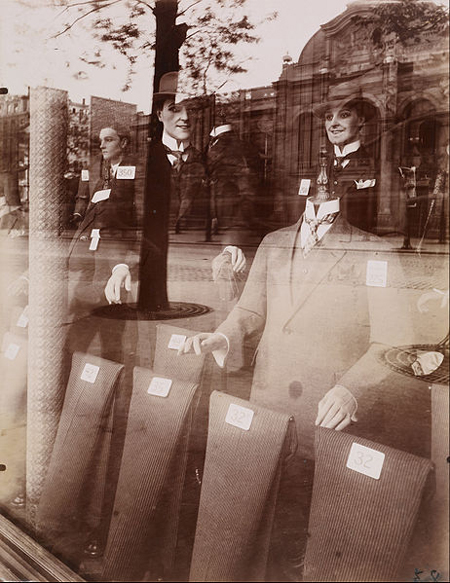 Eugène Atget, “Magasin, Avenue des Gobelins”, Aristotype, 8.81 x 6.81 inches, 1925 While studying the history of photography, I came across the work of French photographer Eugene Atget who, over his lifetime, photographed the streets of Paris. Leaving no stone unturned, he captured and preserved every nook and cranny of the city which was constantly in a state of transformation. My favourite photographs of his are ones in which he creates layered effects using the reflections of a location. With digital software yet to be invented in the early twentieth century, like all maverick photographers*, Atget used his keen eye as an observer to suggest connections between his subject matter and reflections seen through store display windows. His images of display male and female mannequins appear to ponder the roles they play in society (as well as a whole host of other connotations) transforming them from inanimate objects into participants in the real world. Speaking with the bare minimum of his medium, by layering with light and reflection, Atget is able to say much.
As budding photographers trying to capture that “perfect” shot, we may be bothered by phenomena that seem to interfere with our subject matter (ie. shadows, shiny surfaces, mysterious light, etc.). Using these anomalies to his advantage, Atget accepts them and opens up multiple stories within his images. I believe it’s in considering some of the unintentional effects of the camera that the possibility of seeing the world anew arises. Atget’s photographs of mannequins offer us insight into the social mores of the Paris of his time; ones which I think still hold true today.
Drawing inspiration from Atget, above are a few cell phone photos I’ve taken over the past month. Be sure to also see Annie MacBetty’s blog entry: “Resurrecting Eugene Atget’s Paris: The best window shopping in the world” for more fascinating images.
If you’ve intentionally or accidentally created layered effects with your camera, I’d love to hear your stories.
* Note: In the late nineteenth century to achieve layered effects, photographers placed multiple negatives on top of each other prior to exposing them to light and printing them.
PS Special thanks to Professor Paul Lowry for making Eugene Atget’s work come to life for me and a good friend for directing me to sites with additional references for this entry.
Other Related Links:
The Obsessive Eye of Eugene Atget … (Imaging Resource)
De ce que les yeux voici: Eugene Atget (Moonplaces Blog)
Masters of Photography: Eugene Atget (Excellent text by James Borcoman)
Artist Mentors I: Paul Lowry, Madman or Genius?
 The Shenkman Art Centre’s Significant Contributions Installation (detail views), June 2014, Ottawa, Canada Significant Contributions Project
This Friday I had a chance to visit Significant Contributions, an installation and public art project I’ve been blogging about, organized by artist Karen Goetzinger. This breath-taking series of towering structures is located in the main lobby of the Shenkman Arts Centre. Composed of thousands of origami flowers and decorative paper objects made by the general public (including yours truly), the installation is a testament to what can be accomplished when a community comes together to create art. Equally moving are the heart-felt messages integrated into the work by contributors reflecting on the vital role art plays within the community and their lives.
Krystyna Sadej’s Selfie
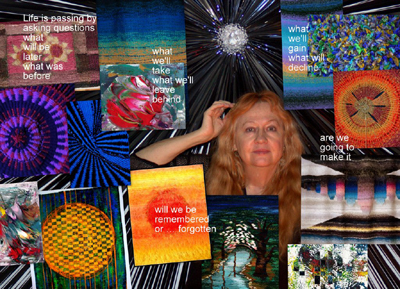 Krystyna Sadej, Self-Portrait, Digital Collage, 2014 CYW member Krystyna Sadej recently shared a beautiful digital self-portrait she made for a current exhibition at the Shenkman Arts Centre with me. The original “selfie”, self-portraits are a wonderful way to capture reflections and attributes of ourselves. Krystyna’s portrait strategically features the artist in front of a glittering disco-like ball which perfectly suits her dynamic, glittering star personality! Surrounded by images of her work and inner reflections, she reveals a candid portrait of her artist spirit. If you’re interested in experimenting with electronic collage, with a little bit of practice, imaging software such as Photoshop will allow you to easily compose work in a grid-like format. If you’re not technically inclined, this can also be accomplished through your local camera shop (ie. Black’s, here in Ottawa) at kiosks or on-line in a fairly straightforward manner. Thanks for sharing and inspiring us, Krystyna!
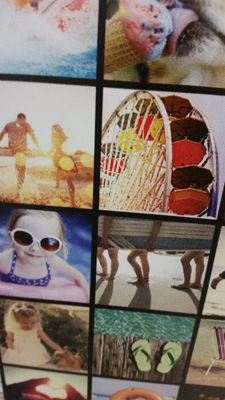 An electronic Instagram collage from Black's Camera Store Decorate-it-Yourself Knapsack
Last fall I spotted a young girl at the bus stop sporting a hand-decorated knapsack. Covered with beautiful graffiti-like drawings and words it was further embellished with duct tape – totally enthralled by it, I wondered where I could get my hands on one. Well it wasn’t long before I was browsing through an art store and stumbled upon one. This paper bag-coloured knapsack is produced by Miquelrius, a company which also makes other eco-friendly products. Wondering what mediums would be best suited to decorate it with; I questioned a store clerk who recommended using permanent pen or felt-tip marker (ie. Sharpies, Pigma Micron, Faber-Castell Pitt). So I’m ready to take the plunge and give it a go. It’ll be awesome walking down the street with my own custom designed backpack. I’m not sure what it’ll end up looking like but I do know it’ll involve some Zentangling… I’ll play it by ear.
Glue Gun Stencils
This week I ran across a fantastic stencilling idea from Artists Network. Inspired by Traci Bautista’s Printmaking Unleashed Kit, editor Cherie Haas suggests drawing shapes or designs with a glue gun, letting them dry and then using them as stencils – such a quick and simple idea… the design possibilities are endless! See A Simple Tool for Printmaking to learn how to design fabulous glue gun stencils to add to your mixed media work.
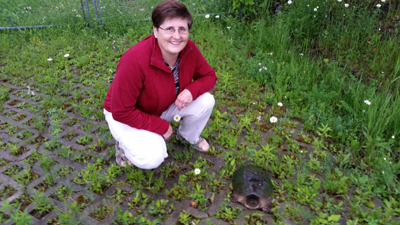 Wendy helps me rescue a turtle... Why Did the Turtle Cross the Road?
Ever since I was a kid I’ve had a soft spot for turtles. I sadly remember discovering the dead body of one on a beach just after it had laid its eggs. In my new neighbourhood, there are turtles galore. It’s always heartbreaking to see baby ones crushed by cars along the roadside during my walks. A few weeks ago I found one asleep in our parking lot and carried it back to the river. This week, from my balcony window, I noticed several people come to aid of a turtle who kept on trying to cross our busy road. Every time someone would place it the direction of the river, it would stubbornly continue to attempt to cross the road; it was as though it was on a mission! Watching anxiously, as it inched its way yet again, I hurried down and with the help of a stranger, Wendy (who volunteers at a nearby wildlife conservation centre), safely escorted it across the street. She (pictured above) informed me that the turtle was going to lay its eggs and needed to be allowed to follow its chosen path. It’s exciting to be living in a place that provides inspiration on a daily basis. Seeing this drama unfold me made me realize the fragility and power of nature; it’s a theme I’d like to capture in my future work.
Other Related Links:
Significant Contributions: An Origami Project Unfolding
“Today I have grown taller from walking with the trees.” — Karle Wilson Baker
Today I thought I’d share some photos of my new neighbourhood with you, in particular, some views of the trails, walkways and beach I’ve discovered along the Ottawa River where I live. I’m fortunate to have a calm and inspiring view of the landscape from my living room window. As an avid walker, it’s been a treat to extend my excursions from the mall (in the winter months) to these beautiful trails and parks which are a haven for those who enjoy hiking, canoeing, fishing or just soaking up the sun. It’s also a perfect spot for bird watching. I’ve spotted a number of varieties here I’ve never seen before; my favourite being these small yellow birds that I think are a type of finch. In this neighbourhood the cry of birds permeates the air – whether it’s the sweet call of a robin or the loud honking of Canada Geese as they make their way across the river. On walks, it’s always a challenge to try to capture these flighty creatures; they always manage to elude me… flying fast and furiously into the skies before I even have a chance to click my camera button. Speaking of cameras, I recently purchased a new cell phone with an awesome built-in camera; now I’m never without it on outings. I really enjoy taking photos of flora and fauna here along with all kinds of curious objects that fall across my path. Here are some of my favourite images taken just this weekend…
 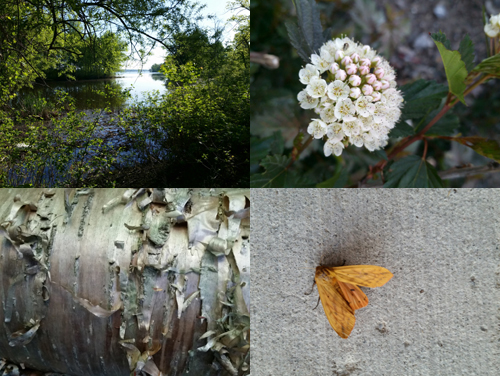 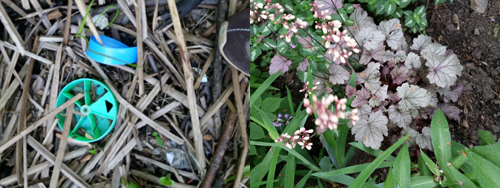  Other Related Links: Other Related Links:
Tales from the Observer: Make the Mall Your Living Studio!
A Walk a Day
 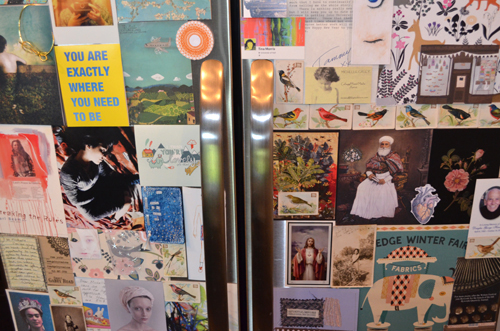 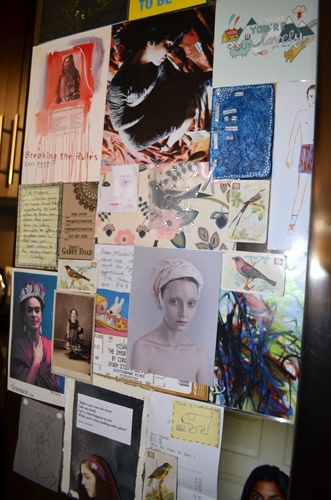 While reviewing photos of our old house this month, my heart warmed at the sight of our old kitchen refrigerator door covered with paper paraphernalia. Perhaps you have a similar ritual of posting things to your refrigerator door. In meditating its collage-like surface which offered brief glimpses of my life, I felt it resembled a window into my soul. Art work from nieces and nephews; postcards and birthday cards from friends; thank you, sticky notes and bits of ribbon, string and feathers spirited from gifts gave it a life of its own. While reviewing photos of our old house this month, my heart warmed at the sight of our old kitchen refrigerator door covered with paper paraphernalia. Perhaps you have a similar ritual of posting things to your refrigerator door. In meditating its collage-like surface which offered brief glimpses of my life, I felt it resembled a window into my soul. Art work from nieces and nephews; postcards and birthday cards from friends; thank you, sticky notes and bits of ribbon, string and feathers spirited from gifts gave it a life of its own.
I’ve always loved the idea of refrigerator art. Although you may not see it in a gallery, it’s a form of everyday art. Its counterparts include any kind of surface you can stick things to: a bulletin Board (cork and magnetized) or a wall in your home – I’ve seen a number of these on Pinterest as well. For those of you who don’t feel you’re an artist at heart, it’s one of the easiest ways to collage. Push pins, magnets, tape and sticky tack are all you need to “glue” your pieces without any mess. It’s also a versatile way to work allowing for easy removal, placement and updating of materials should you decide to change things around. This aspect makes it ephemeral and organic; with the addition of new mementos, it’s constantly shifting its shape as time goes by.
When people tell me that that they’re intimidated about collaging, I recommend this form to begin with; it requires little time and can be spread over a long period. If you have a busy schedule, consider building your composition on a daily basis by adding two to four images at a time. While deciding what items to put up*, I suggest choosing ones that are close to your heart: colours, textures/patterns and words that have personal meaning to you. Not knowing how your board will be transformed each day will add some intrigue into your life and all it requires is less than 10 to 15 minutes of your time. You don’t need a rhyme or reason for choosing or placing pieces a certain way; go with the flow and trust your gut feeling. Using this method, your piece will always be fresh, a work in progress… as ever-changing as life itself.
If you share my passion for refrigerator art, I’d love to hear your thoughts on the subject. Pictured above, my new condo refrigerator doors.
*Note: I use: Favourite quotes/words/expressions, recipes, artwork, sticky notes, postcards, greeting cards, friend’s business cards, invitations and notices of events, coupons, etc..
Bonus Tip: The refrigerator door is a great spot to create a vision board on.
PS Thanks to a dear friend TB for inspiring today’s blog title and topic.
Other Related Links:
The Call of the Vision Board
The Fabric Patterns of Everyday Life (Part II)
The Birth of Collage Your World
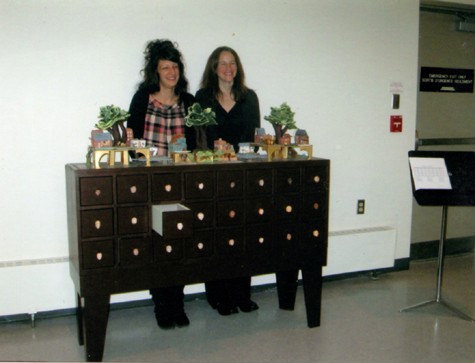 Sandra Mirabelli (Ottawa Public Art Program Coordinator), Kristina Frangione (Assistant) pose alongside the C4 Cabinet, CCCC Project, Hintonburg Community Centre, 2009 (Photo: Lorraine Victor) As a child I loved miniature doll houses. A friend of mine had a beautiful three-story one filled with exquisite tiny objects. I could only dream of having one because my parents could never afford such an item. But I remember once, when I lamented about not having one, they built me a small two-story cardboard house which they decorated with scraps of old wallpaper. I was touched by their thoughtful gesture and carried its memory in my heart for quite some time…
In 2009 I participated in a community art project: Contemporary, Conceptual, Compartmental Community (CCCC). Like the Significant Contributions exhibition I’ve spoken of, it invited the public, regardless of age or background, to participate. The exhibition’s theme revolved around neighbourhood and community; the pieces for the show were selected by means of a lottery. The proposal’s most challenging aspect required that art objects be no wider than about 6 inches as each work would be housed in a small cabinet drawer. The cabinet, which was built and designed by local artisans, would then act as a portable museum which contained 24 art works. Its design was inspired by traveling museums of the Renaissance known as Cabinets of Curiosity or Wunderkammers. I was elated when I found out I was one of the lottery’s winners. As a fledgling writer and maker of small objects, the project seemed heaven sent. For years I’d wanted to tell the story of the neighbourhood I grew up in.
It’s not every day we get to hear the stories of current-day citizens in our museums and galleries; the CCCC gave common people a chance to tell stories about their communities across the city*. In conceiving my piece, I blended the memory of my paper house with my parents’ dream of owning a home. For some in North America owning a house is the norm, but for my mixed race Christian parents living in Muslim-run Pakistan in the 1950’s/60’s, it was not a reality for them to own home or land. In 1970, when ethnic and religious tensions rose, they moved to Canada bringing this dream with them.
 Michelle Casey: Golden Triangle Project (Interior view), Assemblage: scrapbooking paper, acetate, ink, rubberstamp, magnets), 2009 Thirty years later, I found myself going back to the places I’d lived in as a child to create my “Golden Triangle” project for the CCCC. Photographing these houses and apartment buildings, which were all located in close proximity of each other, brought forth fond and bittersweet memories which I recorded on the interior walls of my paper house. Its transparent patterned roof revealed fragments of these tales as well as a map of the neighbourhood located on its floor. The piece unfolded so a viewer could read the stories it contained. Its exterior view featured facades of each place we lived in. Some of our happiest memories reside in these spaces; each one slighter bigger and better than the next. In the early 80’s, however, our good fortune was short-lived when economic forces intervened; the area we lived in known as the Golden Triangle became prime real estate territory. As a result, many lower-middle class families renting there, like ours, were forced to move as greedy landlords tripled their profits selling these properties. New stylishly renovated residences were built for high income earners rendering invisible the heartbreak and pain that came with the loss of these homes for their prior residents. My family moved to a low rental housing community which presented many social and security-related challenges for us. With our sense of dignity lost and our dreams dashed, it felt like we’d moved a giant steps backwards. I was 18 then and lost much faith in the world. But even in the face of our tragedy all hope was not lost. On a personal note, I learned much about the plight of low income communities. Eventually, with all members of the family working, we were finally able to purchase our first home in 1987; it was cause for great celebration and brought with it a sense of great pride and belonging.
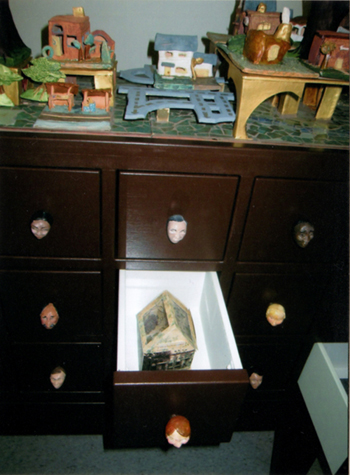 My Golden Triangle paper house at the C4 Gallery: CCCC Project, Hintonburg Community Centre, 2009 (Photo: Lorraine Victor) 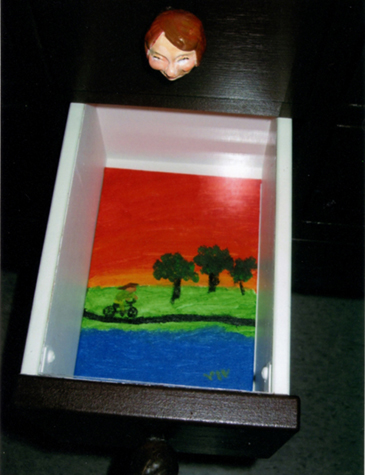 The work of another participant at the C4 Gallery: CCCC Project, Hintonburg Community Centre, 2009 (Photo: Lorraine Victor) 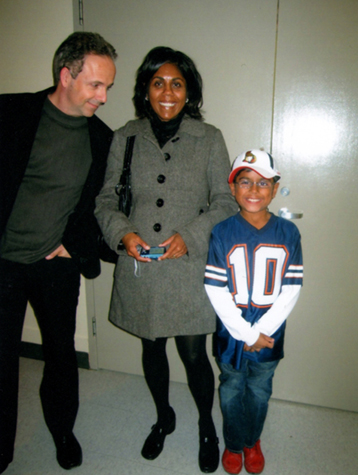 Kevin and I with my nephew Jacob, Opening night at the C4 Gallery: CCCC Project, Hintonburg Community Centre, 2009 (Photo: Lorraine Victor) *Note: At least three different CCCC exhibitions took place throughout the year. When they were over, the work of each artist was traded amongst the show’s participants so we each had a souvenir from a fellow neighbour in the city… I received a miniature bicycle with wings! Special thanks to my sister Lorraine Victor for photographing the event.
Excerpt from one interior wall of the Golden Triangle Project:
Six months after moving to Ottawa from Pakistan, my family rented our first house on 181 Frank Street in 1971. It was small for a family of five; one living room, bedroom, bathroom, and kitchen all connected by a long, dark narrow hallway. But it was a palace – our little nest. It had a tiny deck in the backyard that threatened to be devoured by all kinds of weeds. On sunny afternoons we’d stand out there and blow soap bubbles in the wind while dad dreamed of one day having a garden. I remember sitting on the front porch after a rain storm eating a Popsicle, listening to Joni Mitchell sing “Clouds” on the radio. I was six and a half.
Please Note: I’ll be taking the next couple of weeks off to work on some projects. I’ll be back on May 25, 2014. My Spring newsletter will be out shortly.
Other Related Links:
MOMA Wunderkammer
Little Paper Houses (Just Something I Made Blog)
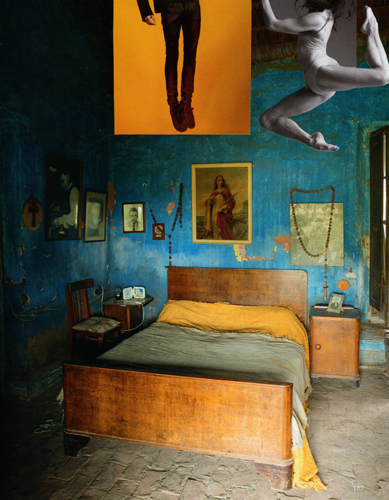 Michelle Casey, "Rise", Collage, 8 x 10 inches, April 2014 “There is no exercise better for the heart than reaching down and lifting people up.” (John Holmes)
Do you believe in angels? I believe in the presence of human angels in our lives. Every now and again one steps in and forever changes our fate. My life as an artist would have never come to fruition if it wasn’t for the help of one such angel.
My decision to study art was a long time coming. By age 16 I was certain that I wanted to become an artist; it wasn’t until I was 27, after much time spent catering to the needs of others that I finally decided to pursue my studies in visual arts. By that time, I’d already been rejected twice from a local college’s commercial art program so I decided to take another route by applying to a university fine arts program; at the time it seemed like my last hope. Deeply committed to the task, one of my biggest challenges was filling out the application form – it completely overwhelmed me. Working as a secretary then, I engaged the help of my university-educated co-workers to help me decipher and fill out the form. My husband assisted me in editing a required accompanying essay outlining why I wanted to study art. The next daunting component of the process was submitting and partaking in a portfolio interview. I had several pieces I’d made but I needed to create much more work so I enrolled in evening art classes to build up my portfolio. To help with the interview my husband and friends conducted pre-interview rehearsals with me to build my self-confidence; this was crucial because much rested on my ability to sell myself and my work. I have to admit I was still nervous before the interview, but knowing I’d put together a sound application boosted my spirits and mentally prepared me for the session. The interview went very well; I answered each question with sureness and passion and felt that I’d convinced the interviewers that I’d be an ideal candidate for their program.
You can imagine my surprise when I received a letter from the university stating my application had been revoked; according to them it had arrived late. Having put much time and energy into applying, I was devastated. After a pep talk with friends, I headed to the Registrar’s Office to straighten out the misunderstanding and explain I had indeed hand-delivered my application on time*. When I got there I was unable to convince the clerk otherwise. With a heavy heart I left the building and sat down on its front steps silently crying. My dreams had been dashed a third time and I was ready to give up. Just then a young woman (I had met months earlier from the university’s counseling office) approached me; she had noticed my distress and enquired as to what was wrong. I tearfully explained my dilemma upon which she led me into the building and had my application reinstated within minutes. To doubly secure things she called the fine arts department and found out that I’d passed the portfolio interview phase. She informed me that this was a good sign that I would be accepted into the program. I can’t begin to explain my elation upon receiving news of my acceptance into the visual arts program – it was a dream come true!
Weeks later I visited with the young woman who had helped me and she told me she rarely ventured outside on the buildings steps for break. On that day, however, something compelled her to go and she was glad she had. I realized what a miracle it was that this veritable angel was there when I needed her. I saw it as a sign that I was destined to study art against all odds. From that day forward, when things are challenging in the field, I look back to that time and draw much strength from it. I remember no matter what happens, that I belong here. Even today the powers that be continue to work their magic for me. I’m grateful for the presence of angels and even the occasional well-meaning ghost in my life.
I know first-hand what a daunting task applying for university or college can be for those of you who don’t have the privilege of having family or friends to guide you. Something as simple as filling out a post-secondary application form can be the thing stands in the way of you and your dreams. If you don’t know where to begin, it’s easy to want to give up. If you find yourself in this position, I recommend you gather all your courage and seek the information you need from knowledgeable sources. In doing your research, the Internet is an invaluable source of information as are college and university counselors. Taking a tour of an institution’s facilities will also help you network with the program’s teachers and students who may further aid you in your quest for getting into a program. And remember, I’m here too if you need any further insights in this area
* Note: Instead of personally hand-delivering your application, I advise you send it in a post-marked format that ensures it will be signed and dated upon receipt. That way there is no question about the time of delivery.
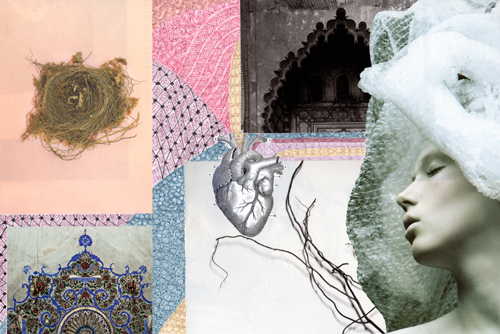 Michelle Casey, "Roots & Wings", Mixed Media Collage (marker, magazine fragments on Fabriano paper), 9 x 12 inches, April 2014 Last summer I found myself drawn to the symbol of the heart. While sifting through fragments, I was captivated by a drawing of an anatomical heart in Gray’s Anatomy; I decided that I’d like to use it to speak of the recent pain and loss I’d suffered. I put it aside hoping to find the perfect home for it in a piece. Since then I’ve been seeing heart-related imagery everywhere… in books, magazines, on clothing, Facebook and especially Pinterest. As a result, I was compelled to create a Pinterest Heart Board. I was curious to see the ways in which artists have been using this age-old symbol to convey their ideas and feelings about it. I’ve found hearts of steel, glass and stone; hearts blazing with fire and ones pierced by steely thorns. Some are romantic, others macabre. My favourite ones are steeped in ancient mythology and religion. In adding to my collection I found the practice of amassing hearts is just the tip of the iceberg. Its well worth following up collecting with additional research (whenever possible*) with the stories/histories behind the making of the symbols we use in our art. This will give us a better understanding of the ways in which they’ve been used for expression. I enjoy researching the symbols and visual fragments I use in my pieces; they never fail to lead me on exciting voyages of discovery; when I use them wisely, they give my work a greater impact. They also fuel future work. My research on the anatomical heart for instance led me to another important heart icon from my past.
 Sculpture, detail of the Sacred Heart of Christ For research on this heart, I began with my childhood memories. Growing up in a Roman Catholic family, I came to know this symbol as the “Sacred Heart”; a symbol of Christ’s love for humanity which appeared to me then as both a wondrous and morbid image. Its presence was felt in every room of our home: embedded within portraits of Christ and the saints; on prayer cards, rosaries and on the medals we wore beneath our clothes to protect us from the evil. While the anatomical heart speaks of its surface qualities and biological function, the Sacred Heart which spouts fire and is encircled by thorns, relays its inner human characteristics. For me the Sacred Heart has long been a sign of strength, courage and endurance: the ability to withstand life’s greatest obstacles. Like the “S” on Superman’s chest, the Sacred Heart enshrined within the bodies of religious figures reveals their invulnerability, their triumph over pain while simultaneously conveying their human frailty. Considering the state of my heart this past year, I’ve wondered if my mortal heart could ever possess the fantastic qualities of the hearts of the saints. So it was serendipitous to re-discover the positive sentiments behind the Sacred Heart. Uncovering a few of its related histories along the way has enabled me to envision my life in a more hopeful light. In this regard, I owe a great debt to painter Philippe de Champaigne whose portrait of Saint Augustin, replete with flaming heart in hand recently led me on an enlightening journey of self-reflection… perhaps one day I will tell you more about this.
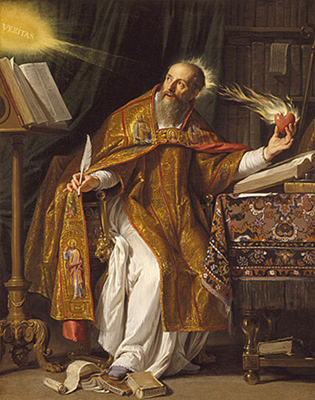 Philippe de Champaigne, “Saint Augustin”, oil on canvas 31 x 24.5 inches, (1645-1650). Linking the heart, hand and mind, St. Augustin’s burning desire was the quest for knowledge and the truth. Do you make reference to popular symbols in your work? If so, I’d love to hear a story behind your favourite symbol. If you haven’t considered researching symbols before, I hope I’ve aroused your curiosity into digging deeper into the icons you use.
* Note: I’ve found it isn’t easy to find background information on all images found on Pinterest particularly when they’ve come from sources such as Flickr.
Other Related Links:
Michelle Casey: Pinterest Heart Board
The Sacred Heart (Salt + Light Blog)
Punctured Artefact: Sacred Heart
Heart Symbols & Meaning: Hearts in Doodles
Augustine of Hippo (Wikipedia)
The One with a Hand: An Essay on Embodiment, Labor, and Alienation (Rizhomes)
|
|
 Recently I visited the La Fab Boutique where my fine art cards are sold. A 10-minute drive from downtown Ottawa in scenic Chelsea, Quebec, it’s a jewel of a spot nestled within the majestic Gatineau Hills. The area is known for its cozy cafés, art galleries, craft stores and bakeries. It’s also the home of the ever-popular Nordik Spa. I love the gallery’s garden which incorporates art and found objects into its landscaping.
Recently I visited the La Fab Boutique where my fine art cards are sold. A 10-minute drive from downtown Ottawa in scenic Chelsea, Quebec, it’s a jewel of a spot nestled within the majestic Gatineau Hills. The area is known for its cozy cafés, art galleries, craft stores and bakeries. It’s also the home of the ever-popular Nordik Spa. I love the gallery’s garden which incorporates art and found objects into its landscaping. I was pleased to discover that my cards are selling well in the boutique and hope to have some new designs to submit to the store in the near future*. The store sells the work of many local artists from Ontario and Quebec. I always have a hard time visiting it without buying something… for me, purchasing a small piece from an artist whose work I love is always a must.
I was pleased to discover that my cards are selling well in the boutique and hope to have some new designs to submit to the store in the near future*. The store sells the work of many local artists from Ontario and Quebec. I always have a hard time visiting it without buying something… for me, purchasing a small piece from an artist whose work I love is always a must. A former church rectory, which has been lovingly restored, La Fab’s Gallery showcases the work of established and emerging artists. The photo (above, right) features the ceramic collage sculpture of Lisa Creskey (see glass case). For my review of her work see: Lisa Creskey: Telling Stories with Clay.
A former church rectory, which has been lovingly restored, La Fab’s Gallery showcases the work of established and emerging artists. The photo (above, right) features the ceramic collage sculpture of Lisa Creskey (see glass case). For my review of her work see: Lisa Creskey: Telling Stories with Clay. Upstairs, the gallery rents studios to several artists (i.e painters, print makers, mixed media artists, etc.). I love seeing artists’ work in progress. I especially get a thrill out of walking through their studios because it’s a lot like travelling through their minds!
Upstairs, the gallery rents studios to several artists (i.e painters, print makers, mixed media artists, etc.). I love seeing artists’ work in progress. I especially get a thrill out of walking through their studios because it’s a lot like travelling through their minds!







